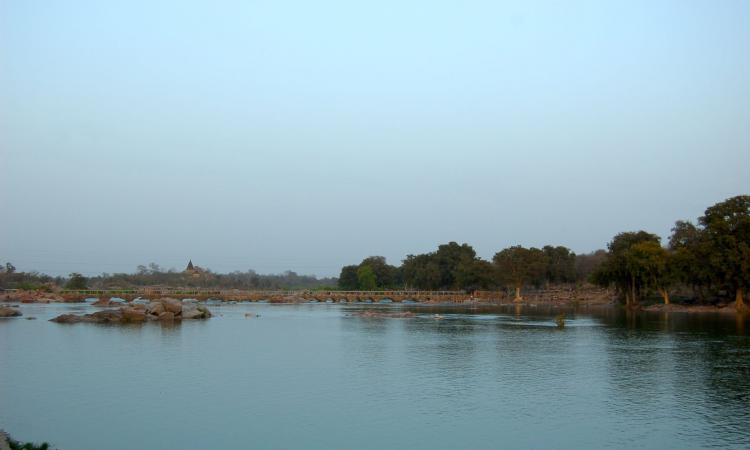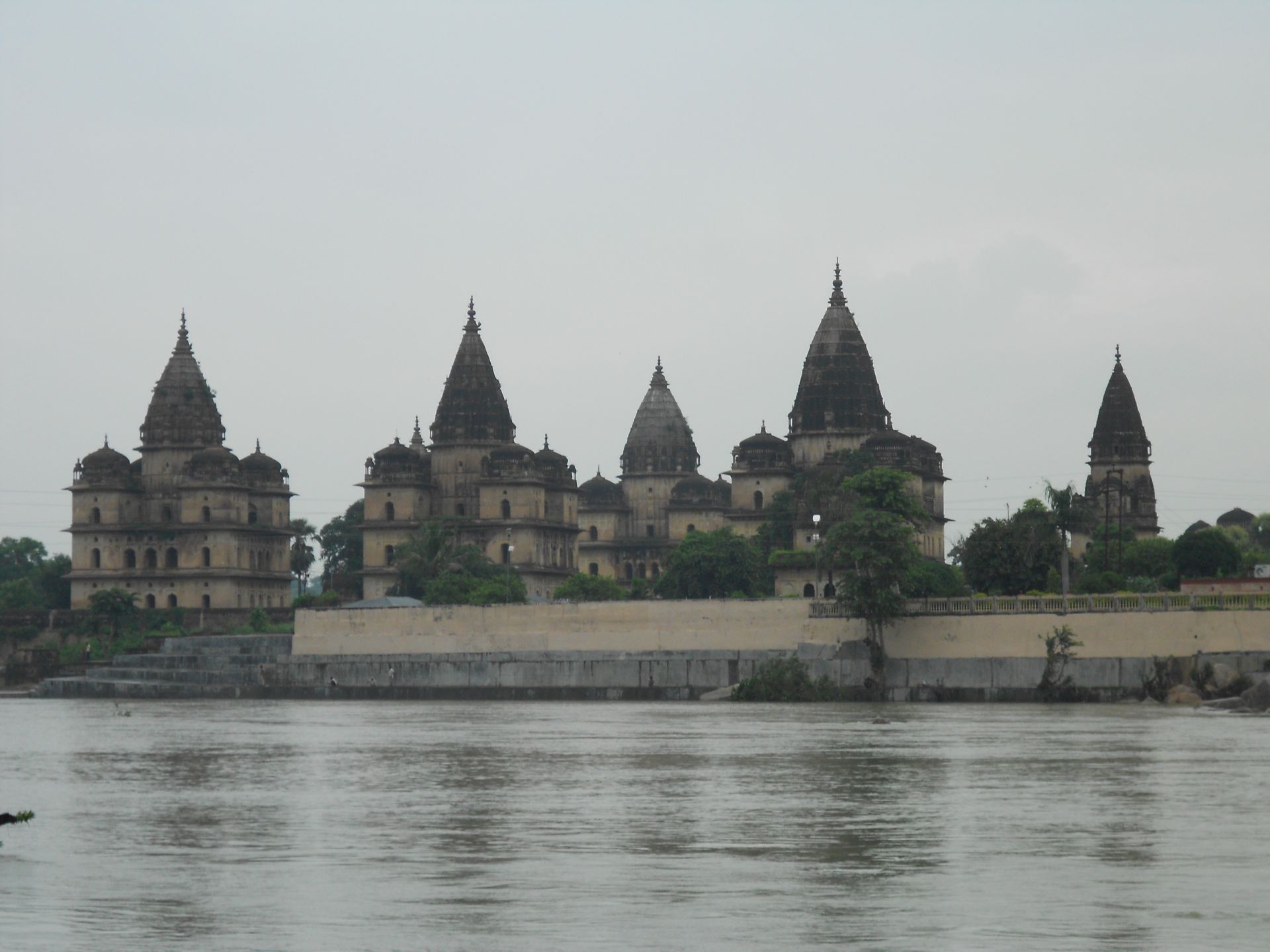
In December 2015, more than forty years after it was conceived, the Government was set to launch India’s ambitious 30-link river interlinking project linking 37 rivers. The linking of the ‘surplus’ river Ken through a 231.45-km canal with the ‘deficient’ river Betwa flowing through the states of Madhya Pradesh and Uttar Pradesh is purported to irrigate parched farmlands. A 77 metre high Daudhan dam is to be constructed on the Ken with a capacity of 2,953 million cubic metres as a part of the project. The Ken-Betwa project initially mooted in the 1980s was brought out of cold storage during the late 2000s followed by its being challenged in the Supreme Court, which gave its nod in 2013. The larger scheme of interlinking of rivers too cleared a legal hurdle in 2012 when the Supreme Court, disposing of two petitions, asked the government to go ahead.
Work yet to begin
The Ken-Betwa link received a renewed push with a Special Committee set up to monitor its execution in September 2014. A separate Task Force too was constituted by the Ministry of Water Resources, River Development and Ganga Rejuvenation (MoWR) in April 2014 to bring in speedy consensus among states on the link projects. The Union Water Resources Minister Uma Bharti, after the sixth meeting of the Special Committee for interlinking of rivers in September 2015, confirmed that the government is committed to implementing the programme with the consensus and cooperation of concerned state governments.
After a nod from both the states, the Detailed Project Report and other formalities have been completed for the Ken-Betwa link proposed to transfer 591 million cubic meters in the first stage. The revised environment impact assessment (EIA) report was submitted by the National Water Development Agency (NWDA), an agency set up by the Government of India under the Ministry of Water Resources exclusively for developing interlinking rivers proposals. Following the Ministry of Environment and Forests' (MoEF) green nod, the NWDA will petition for its techno-economic clearance. As of now, statutory compliances by way of environment, wildlife and forest clearances are awaited and the construction works on the link has not begun.
Many advantages
The massive proposal at an all-India level on interlinking of rivers estimated at Rs 5.6 lakh crore 10 years ago, is expected to generate two 78 megawatts of power through two hydroelectric plants and raise the ultimate irrigation potential by 35 million hectares and in general is expected to propel the economy. Officials peg the cost at much more with the final sum being clear only once the detailed reports for all 30 links are complete.
Two major benefits are being put forward to justify the Ken-Betwa project. Costing over Rs 9393 crores at 2007-08 costs, the link is professed to do away with the twin problems of drought in some places and floods in others. Secondly, the generation of power is being touted with optimism. S. Masood Hussain, Director General of the NWDA, is of the opinion that the project is important for the country’s water security. NWDA further claims that the project reports have taken every possible risk into account and incorporated corrective measures. The Ken-Betwa link through its elaborate infrastructure of dams, reservoirs, tunnels and canals is estimated to irrigate about 6.35 lakh ha of land in Panna, Chhattarpur, Tikamgarh districts in Madhya Pradesh, and Banda, Mahoba and Jhansi districts in Uttar Pradesh. Apart from this, the project is expected to provide piped drinking water for 1.34 million people in the two states.

Vague scheme, huge impacts
On the face of it, the project seems to have many advantages but these are neither without qualifications nor automatic. A river is not just water nor is a river link just limited to transferring waters from a river to another. Himanshu Thakkar, South Asia Network on Dams, Rivers and People SANDRP critiques the concept of interlinking of rivers. “Even if an area is flood-prone, it is not necessarily a water-surplus area. You have to look at a whole area, across the whole year, over the years, in the context of ecological and social ground realities”, he says. Attempts to manage river flow “could be potentially disastrous, since rivers aren't a man-made resource and the flow in such artificially networked rivers isn't two-way, i.e. the direction cannot be reversed”, he adds.
What happens to its floodplain and its ecology? What are its downstream impacts especially on the water flow to the existing Rajghat and Matatila dams, which are anyway faced with water shortages? Prof Brij Gopal, former Professor of Environment Sciences, in a talk at India Rivers Week 2014 states that the NWDA study which establishes that the Betwa is a water short basin while Ken is a surplus basin is flawed and that the EIA should not have accepted this assumption in the absence of an assessment of the project’s hydrological viability. The professor had also brought out the fact that the project report has ignored the frequency of drought in the Ken basin while establishing that it has surplus waters to the notice of the panel. "The project has also kept silent on environmental flows to be ensured", says Himanshu Thakkar speaking to India Water Portal.
The EIA of the Ken Betwa link by the Agriculture Finance Corporation of India (now AFC Ltd) was claimed to be unscientific and inadequate on several grounds by SANDRP. The EIA has no section on biodiversity impact assessment even when the project is likely to submerge a substantial part of the Panna Tiger Reserve, destroy the Ken Ghariyal Sanctuary in the downstream area as well as the surrounding forests. Apart from deforestation and loss of livelihoods of the displaced people, the project has downstream impacts especially in view of climate change concerns, according to Parul Gupta, a lawyer. The EIA is devoid of options assessment, hydrological viability assessment and disaster potential assessment. The public hearing held in late December 2014 in Silon village in Chhattarpur district and Hinouta village in Panna district too drew flak because of the numerous violations. The environment impact assessment is weighed down by deficiencies while public hearings for the project were a sham.
Large tracts of Panna tiger reserve to be submerged
The project is expected to submerge 4,141 hectares of the Panna Tiger Reserve, which falls within a 10-km radius. What will be the impact of the fragmentation of habitat owing to this? How will the habitat loss in swathes of the Panna Tiger Reserve be dealt with? Gopal Krishna of Toxics Watch Alliance (TWA) in a letter to the National Board on Wildlife Standing Committee, MoEF, notes that “the current EIA has failed to adequately assess the impact of the project on the Panna Tiger Reserve or the Ken Ghariyal Wildlife Sanctuary." A bureaucrat posted as Field Director, Panna Tiger Reserve who put down his opposition to the Ken Betwa river link project through a detailed dissenting note was transferred for reasons other than wildlife management.
Toxics Watch Alliance has discarded the project proponent’s view that “the ILR projects are green projects and these link projects under ILR Programme have been formulated by exercising all caution and considering all engineering parameters required for the project." The rationale of the Ken Betwa link has also been questioned by Prof. Kanchan Chopra, Economist with the Institute of Economic Growth and Prof. Y K Alagh, former Union Minister.
The Expert Appraisal Committee (EAC) of the MoEF supposed to give a green nod to the Ken Betwa river interlinking project suggested that all aspects of this project in relation to this disturbance to the reserve need to be studied and assessed more carefully. The EAC has noted that the Landscape Management Plan (LSMP) being prepared by Wildlife Institute of India for the mitigation measures to be taken up in the Panna Tiger Reserve and Ghariyal Sanctuary should be reviewed by an external expert. Only then will the EAC reconsider the project for environment clearance. The Madhya Pradesh State Wildlife Board (SWLB) has decided to recommend the proposal to the National Board for Wildlife (NBWL) seeking wildlife clearance.
The government has adopted the project and any turnarounds now are unlikely. Yet, with so many social and environmental concerns emanating from the project, there is a need to assess these impacts and look for cost effective and non-intrusive alternatives before going ahead with an ambitious scheme of this scale.
/articles/ken-betwa-river-gets-some-respite